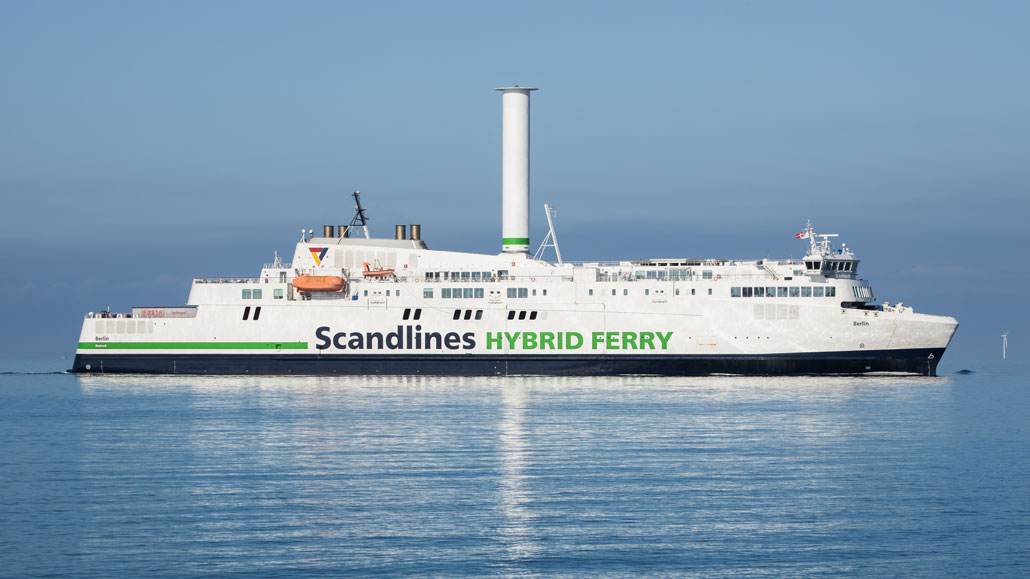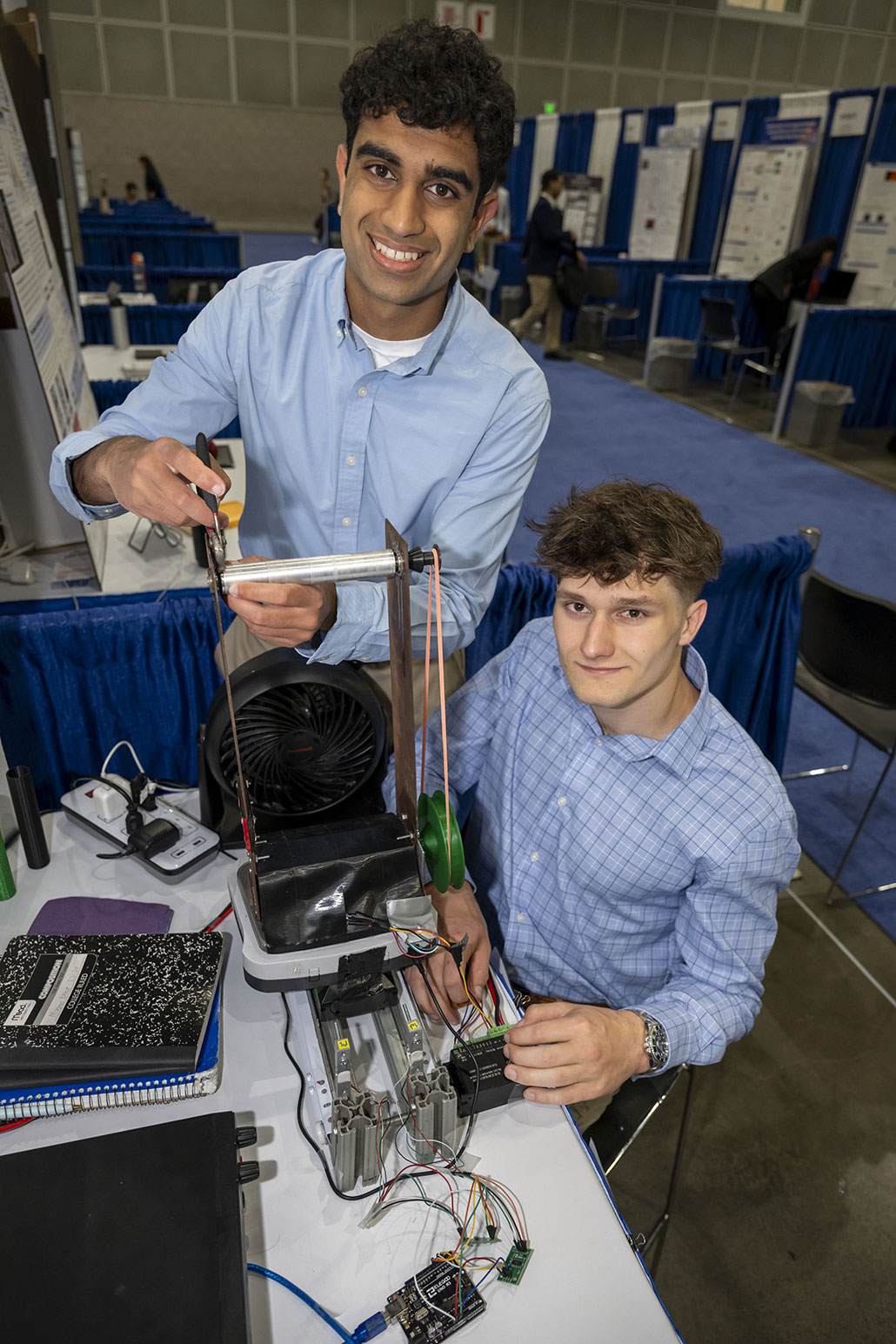Aerodynamics involved in shooting hoops can make vehicles greener
Some ships host tall spinning cylinders that act like sails. Roughing the cylinders’ surface will greatly boost fuel efficiency, teen scientists find.

LOS ANGELES, Calif. — Some vehicles — such as cargo ships — host spinning vertical cylinders to boost their fuel efficiency. Now, two Massachusetts 18-year-olds have shown how to greatly boost the eco-friendliness of such vehicles. Vishnu Angiras and Misha Mishechkin simply roughed up the surface of those cylinders.
The principal behind those cylinders is the same aerodynamics that cause a spinning ball to arc through the air. It’s known as the Magnus effect. It’s named for H.G. Magnus, a German scientist who was the first to experimentally study the concept in 1853.
Vishnu and Misha have now shown how to optimize the fuel-saving value of this Magnus effect. For their discovery, they took home fourth place in the physics and astronomy division — and $500 — at the Regeneron International Science and Engineering Fair (ISEF), here, on May 17. This competition is a program of the Society for Science (which also publishes this magazine).

Misha recalls how he and Vishnu encountered the Magnus effect as seventh graders watching a viral YouTube video. Drop a basketball from 127 meters (415 feet) — almost the height of the Pyramid of Giza — and it will land directly below. But spin that ball slightly before dropping it and the descending ball now sails out in a great arc.
The video pointed to the Magnus effect’s role in sports. That effect explains baseball’s curveball and why a golf ball sails in a big arc as it flies away from the tee.
Do you have a science question? We can help!
Submit your question here, and we might answer it an upcoming issue of Science News Explores
A physics phenomenon
When a ball or cylinder spins, the air speeds up around one side of the object. It’s the side where the object’s surface is moving in the same direction as the airflow. That movement decreases the local air pressure. On the opposite side, the air pressure rises. The pressure difference between the two sides generates a sideways force on the object known as lift.

Vishnu and Misha have been experimenting with the Magnus effect since they were ninth graders. Two years ago, they even published a paper. They showed how adding a spinning cylinder to the back of a car should be able to help it move faster on less fuel.
The YouTube video that kicked off their interest in this idea had explained that some ships have installed vertical spinning cylinders. They act like sails to cut fuel use, Misha says.
Those ship cylinders are smooth. But what if they weren’t?
For instance, golf balls sail great distances because of their textured surface, the duo learned. The ball’s surface dimples reduce drag — a measure of its friction — letting it fly farther than a smooth ball. The teens also found a book chapter explaining how a rough surface alters the Magnus effect, causing a textured ball to travel a different path than a smooth one.
“There’s never been any test on spinning cylinders for how roughness or dimples affect them,” Vishnu says. So he and Misha decided to see if it would alter how well the Magnus effect might propel a ship or other vehicle.
Into the wind tunnel
First, Vishnu and Misha built a test with an aluminum cylinder. This horizontal cylinder sits 60 centimeters (2 feet) off the ground and can spin, thanks to a motor below. A pulley transfers the motor’s motion to the cylinder. This entire device sits on tracks that allow it to move with little friction.
To vary the cylinder’s roughness, the teens covered it with various materials. One was a plastic. They 3-D printed it with a pattern that gave it the same dimpled surface as a golf ball. They also sheathed their cylinder with sandpaper having different roughness levels: 60 grit (coarse), 100 grit (medium) and 180 grit (fine). For comparison, Vishnu and Misha sometimes left the cylinder uncovered, so it was completely smooth.
Then the teens asked a nearby university (the Massachusetts Institute of Technology) to let them use a wind tunnel that can move air at about 32 kilometers (20 miles) per hour. As wind pushed against their system, it touched a sensor that measured the setup’s drag force. A scale beneath the setup also measured the downward force. This allowed the teens to calculate the force of lift exerted on their cylinder.
They spun their cylinder with each textured surface at six speeds: zero, 5,000, 10,000, 13,500, 15,000 and 20,000 revolutions per minute (rpm). For each speed and texture combo, Vishnu and Misha took lift and drag readings three times. Afterward, they divided the average lift by the average drag to get a final ratio. A higher lift-to-drag ratio hints at a more effective texture.
The surprise
“We were expecting dimples to be our best variable,” Vishnu says. In fact, he now reports, “dimples don’t have much of an effect” — at least on a spinning cylinder. “But surface roughness doubles the efficiency.”
The medium-grit sandpaper increased the lift-to-drag ratio best, compared to the smooth cylinder. And that was true at almost all speeds. For instance, at 15,000 rpm, the medium-grit cover gave a lift-to-drag ratio of 3.169. It was only 1.446 for the slick cylinder. That means the medium grit provided a lift-to-drag ratio about 2.2 times that of the smooth texture. So roughening up texture this way should translate to a fuel savings of 119 percent, Vishnu and Misha report.
The two hope to one day patent their design. And Misha wants to tell shipmakers that “if you make your cylinders more rough, you can double your fuel savings.” In much the same way, adding spinning horizontal spoilers to cars — ones with a similarly roughed up surface — should help drop fuel use in cars.
Vishnu will soon graduate from Shrewsbury High School in Shrewsbury, Mass. Misha is a recent graduate of Tahanto Regional High School in Boylston, Mass. Both are off to different colleges. But they hope to continue working — as a team — to refine their designs.
The two were among nearly 2,000 Regeneron ISEF finalists who competed from almost 70 countries, regions and territories for more than $9 million in prizes. This yearly high-school event has been run by Society for Science since this organization created the competition in 1950.
What's Your Reaction?














![[Computex] The new be quiet cooling!](https://technetspot.com/uploads/images/202406/image_100x75_6664d1b926e0f.jpg)








